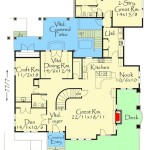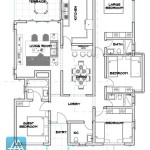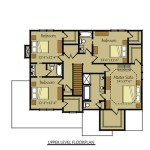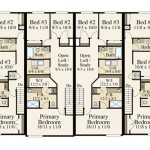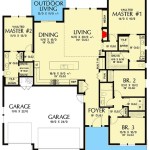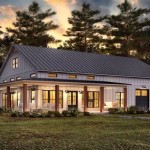Modern Spanish Style Home Plans: A Comprehensive Overview
Modern Spanish style home plans represent a captivating blend of historical charm and contemporary living. Rooted in the architectural traditions of Spain and the Spanish colonies of the Americas, these designs have evolved to incorporate modern amenities and design principles, resulting in homes that are both visually appealing and functionally efficient. This article provides a comprehensive overview of modern Spanish style home plans, exploring their key characteristics, design elements, and considerations for building or renovating a home in this distinctive style.
The allure of modern Spanish style homes lies in their ability to evoke a sense of warmth, elegance, and connection to the past. These homes often feature stucco exteriors, red tile roofs, arched doorways and windows, and courtyards, creating a welcoming and inviting atmosphere. The interiors are typically characterized by open floor plans, natural light, and the use of materials such as wood, stone, and wrought iron. Modern interpretations of this style incorporate contemporary elements such as energy-efficient windows, smart home technology, and minimalist details, resulting in homes that are both beautiful and practical.
Key Characteristics of Modern Spanish Style Architecture
Several defining characteristics distinguish modern Spanish style homes from other architectural styles. These elements are often combined in various ways to create unique and personalized designs. Understanding these key characteristics is essential for appreciating the nuances of this architectural style.
First, the stucco exterior is perhaps the most recognizable feature of Spanish style homes. Stucco is a durable and versatile material that provides excellent insulation and a distinctive texture. It is typically applied in a smooth or slightly textured finish and painted in warm, earthy tones such as white, beige, or terracotta. The stucco exterior contributes to the overall Mediterranean feel of the home, creating a sense of warmth and tranquility.
Second, the red tile roof is another iconic element of Spanish style architecture. Traditionally made from clay, red tiles provide excellent insulation and a distinctive visual appeal. The curved shape of the tiles creates a beautiful texture and adds to the overall charm of the home. Modern options include concrete tiles that mimic the appearance of clay tiles but offer enhanced durability and longevity. The red tile roof is a defining feature that instantly evokes the Spanish colonial heritage of the style.
Third, arched doorways and windows are prevalent in Spanish style homes. Arches create a sense of elegance and sophistication, softening the lines of the structure and adding visual interest. They can be incorporated into a variety of openings, including entryways, windows, and interior passageways. The use of arches helps to create a sense of flow and continuity throughout the home, enhancing its overall aesthetic appeal. Different types of arches, such as Roman arches, Moorish arches, and horseshoe arches, can be used to create different effects and add to the architectural diversity of the design.
Fourth, courtyards are integral to the Spanish style home. They provide a private outdoor space that is sheltered from the elements and offers a tranquil retreat for relaxation and entertainment. Courtyards are often landscaped with lush greenery, fountains, and seating areas, creating a peaceful oasis. They also help to bring natural light and ventilation into the interior of the home, enhancing its livability and comfort. Courtyards can be designed in a variety of sizes and configurations, depending on the size of the property and the preferences of the homeowner.
Finally, the use of natural materials is a hallmark of Spanish style architecture. Wood, stone, and wrought iron are commonly incorporated into the design to create a warm and inviting atmosphere. Wood beams, exposed brick, and stone fireplaces add texture and character to the interior of the home. Wrought iron details, such as railings, light fixtures, and decorative accents, provide a touch of elegance and sophistication. The use of natural materials helps to connect the home to its natural surroundings, creating a sense of harmony and balance.
Modern Interpretations and Design Elements
Modern Spanish style home plans have evolved to incorporate contemporary design elements and amenities, resulting in homes that are both stylish and functional. These modern interpretations often retain the key characteristics of the traditional style while incorporating new materials, technologies, and design principles.
Open floor plans are a common feature of modern Spanish style homes. This design promotes a sense of spaciousness and connectivity, allowing for easy flow between living, dining, and kitchen areas. Open floor plans are ideal for entertaining and create a more social and interactive living environment. They also allow for more natural light to penetrate the interior of the home, enhancing its livability and comfort. While maintaining that spaciousness, modern layouts also take into consideration a demand for flexible spaces that can be adapted to meet various needs.
Large windows and doors are also frequently used to maximize natural light and ventilation. These openings often feature arched or rectangular shapes and are typically framed with wood or metal. Large windows and doors connect the interior of the home to the outdoor environment, allowing for seamless transitions between indoor and outdoor living spaces. They also help to reduce the need for artificial lighting, saving energy and creating a more sustainable living environment.
Minimalist details are often incorporated into modern Spanish style homes to create a clean and contemporary aesthetic. This can include simple trim, clean lines, and a limited color palette. The use of minimalist details helps to create a sense of calm and uncluttered space, allowing the architectural features of the home to take center stage. It also allows for more flexibility in terms of decorating and furnishing the interior of the home.
Smart home technology is increasingly being integrated into modern Spanish style homes to enhance comfort, convenience, and energy efficiency. This can include features such as smart lighting, smart thermostats, and smart security systems. Smart home technology allows homeowners to control various aspects of their home from their smartphones or other devices, enhancing their overall living experience. It also helps to reduce energy consumption and save money on utility bills.
Sustainable design principles are also frequently incorporated into modern Spanish style homes to minimize their environmental impact. This can include features such as energy-efficient windows, solar panels, and rainwater harvesting systems. Sustainable design principles help to reduce the carbon footprint of the home and create a more healthy and environmentally friendly living environment. They also help to save money on utility bills and increase the long-term value of the home.
Considerations for Building or Renovating
Building or renovating a home in the modern Spanish style requires careful planning and attention to detail. Several factors should be considered to ensure that the final result is both aesthetically pleasing and functionally efficient.
First, selecting a qualified architect or designer is essential. An experienced architect or designer can help to translate the homeowner's vision into a cohesive and well-executed design. They can also provide guidance on material selection, construction techniques, and building codes. Choosing an architect or designer who is familiar with the nuances of Spanish style architecture is particularly important to ensure that the final result is authentic and visually appealing.
Second, choosing the right materials is crucial for achieving the desired aesthetic and ensuring the durability of the home. Stucco, red tile, wood, stone, and wrought iron are all essential materials for creating a traditional Spanish style look. However, it is important to select high-quality materials that will withstand the elements and require minimal maintenance. Modern alternatives, such as concrete tiles and composite wood products, can offer enhanced durability and longevity without sacrificing the aesthetic appeal of the traditional materials.
Third, paying attention to the details is essential for creating a truly authentic Spanish style home. This includes details such as arched doorways and windows, decorative tile work, and wrought iron accents. These details add character and charm to the home and help to create a sense of warmth and elegance. Working with skilled craftsmen who are experienced in these types of details is important to ensure that they are executed properly and to a high standard.
Fourth, considering the climate and local conditions is important for ensuring that the home is comfortable and energy-efficient. In warmer climates, features such as courtyards, shaded patios, and light-colored stucco can help to keep the home cool. In cooler climates, features such as fireplaces, insulated walls, and energy-efficient windows can help to keep the home warm. Adapting the design to suit the local climate and conditions will help to ensure that the home is comfortable and sustainable year-round.
Finally, planning for the future is important when building or renovating a home. This includes considering factors such as aging in place, accessibility, and future renovations. Designing the home to be adaptable and accessible will ensure that it remains comfortable and functional for years to come. It will also increase the resale value of the home and make it easier to adapt to changing needs and lifestyles.
In summary, modern Spanish style home plans offer a captivating blend of historical charm and contemporary living. By understanding the key characteristics, design elements, and considerations for building or renovating, homeowners can create a beautiful and functional home that reflects their personal style and preferences. The timeless appeal of Spanish style architecture, combined with modern amenities and design principles, results in homes that are both visually stunning and exceptionally livable.

Small Spanish Contemporary House Plan 61custom Modern Plans Style Homes

Bungalow House Plans Spanish Style Homes Craftsman

Spanish Colonial Home Plans Sater Design Collection

Small Spanish Contemporary House Plan 61custom Modern Plans Style Homes Mediterranean

Spanish House Plan 1 Story Coastal Style Home Floor Mediterranean Plans New

Spanish Adobe Style Plans 61custom Contemporary Modern House
5 Bedroom Spanish Style House Plan With 4334 Sq Ft 134 1339

Small Spanish Contemporary House Plan 61custom Modern Plans

Bungalow House Plans Colonial Mediterranean

Spanish Revival Style Home 1926 Universal Plan Service No 543 House Plans Portland Homes

